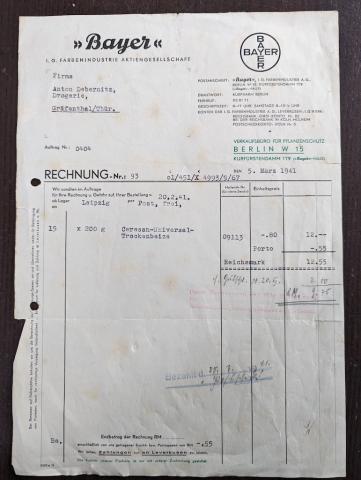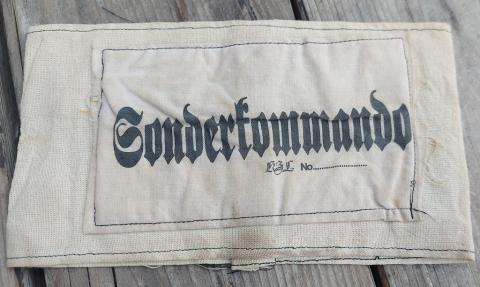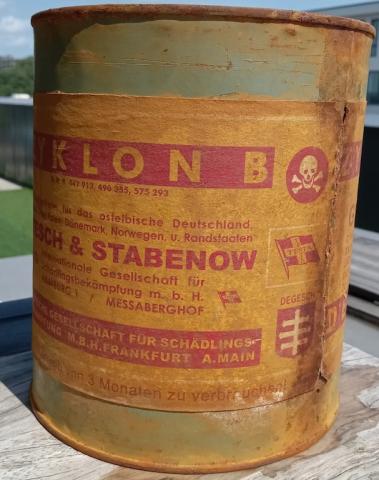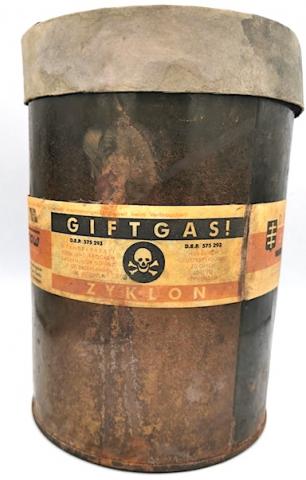Concentration camp AUSCHWITZ crematory company Topf & Sohne pen
Concentration camp AUSCHWITZ crematory company Topf & Sohne pen
Product
Concentration camp AUSCHWITZ crematory company Topf & Sohne pen
*** I HAVE 2 BUT ONLY ONE LEFT, PRICE IS FOR ONE ONLY ***
Kurt Prüfer, the head of Topf & Söhne's small crematoria department, was the main oven designer. He developed a two-muffle transportable oven in September 1939, which was delivered to Dachau concentration camp in November 1939. A 'muffle' is the incineration chamber where the body is put. In order to improve the speed at which bodies burned, the muffles were internally joined, resulting in the ashes of individual bodies being mixed. This was illegal, but all subsequent multi-muffle ovens built for the concentration camps were designed in the same way. A further four, single-muffle ovens were built at Dachau by Topf & Söhne's competitor H. Kori.
Initially, Buchenwald camp, which opened in July 1937, sent bodies to the local Weimar city crematorium. From April 1938 to March 1939, 90% of all cremations at Weimar came from Buchenwald. The unusually high numbers looked suspicious, so the SS wanted their own on-site facilities, although it was illegal for crematoria to be outside of local authority control.[10] A Topf transportable, double-muffle oven was delivered in winter 1939/40, and two, three-muffle stationary ovens were ordered. As with all Topf & Söhne stationary ovens, the parts were made in the factory in Erfurt, and the firm's staff went on site to build them, often spending months at the camps. One staff member, Martin Holich, spent almost 12 months in 1942–43 installing and repairing equipment at Auschwitz-Birkenau.
The muffles of the concentration camp ovens were smaller than those for civil crematoria, because no space for a coffin was needed, which saved both space and fuel. Prüfer later designed ovens with muffles large enough for multiple bodies to be burned simultaneously. Later, in Topf & Söhne's instructions on using the ovens, they advised adding bodies to the muffles at 20-minute intervals as the previous body burned down. Bodies were often pushed in four, five or even six at once.
In addition to making ovens for Buchenwald, Auschwitz and Dachau, Topf & Söhne also supplied a transportable double-muffle oven and a stationary double-muffle oven for Mauthausen-Gusen, a triple-muffle oven at Groß-Rosen and a four-muffle oven at Mogilev ghetto. It is also thought that they supplied transportable ovens to at least one of the Nazi euthanasia institutions, in which a total of over 70,000 physically and mentally disabled people were murdered in 1940 and 1941.
Auschwitz I and II
From August 1940 to May 1942, Topf & Söhne built three double-muffle ovens at Auschwitz I. In October 1941, the SS placed an order for five three-muffle ovens for the new Auschwitz-Birkenau extermination camp (Auschwitz II), where it was initially estimated that over 1000 people per day would die. According to calculations made by the Zentralbauleitung der Waffen-SS und Polizei Auschwitz [de] on June 28, 1943, the crematoria could burn 4,416 corpses per day—1,440 each in crematoria II and III, and 768 each in crematoria IV and V. This meant that the crematoria could potentially burn over 1.6 million corpses per year, however, the actual numbers were lower.
The first transport of Jews arrived at Auschwitz I on 26 March 1942. To deal with the increased demand for body disposal, Topf & Söhne installed a further two 8-muffle ovens in September 1942. An additional five triple-muffle ovens were installed at Auschwitz II by mid-March 1943.
Surviving Sonderkommando prisoners assigned to burn the bodies stated that all four of Auschwitz II's crematoria had the capacity to cremate a total of 8000 bodies per day, although the actual numbers were usually lower. From 1942 until spring 1944 about 1000 people per day were transported to Auschwitz, although not all of them were killed. In the summer of 1944, almost 437,000 Hungarian Jews were transported to the camp and during this period up to 9,000 bodies per day, and sometimes as many as 10,000 per day, were cremated in the ovens, as well as in outdoor burning pits. Crematorium IV was out of use from May 1943, after only two months of service, because it developed cracks. From March 1943 until November 1944, nearly 1 million people were murdered and disposed of at the camp.









